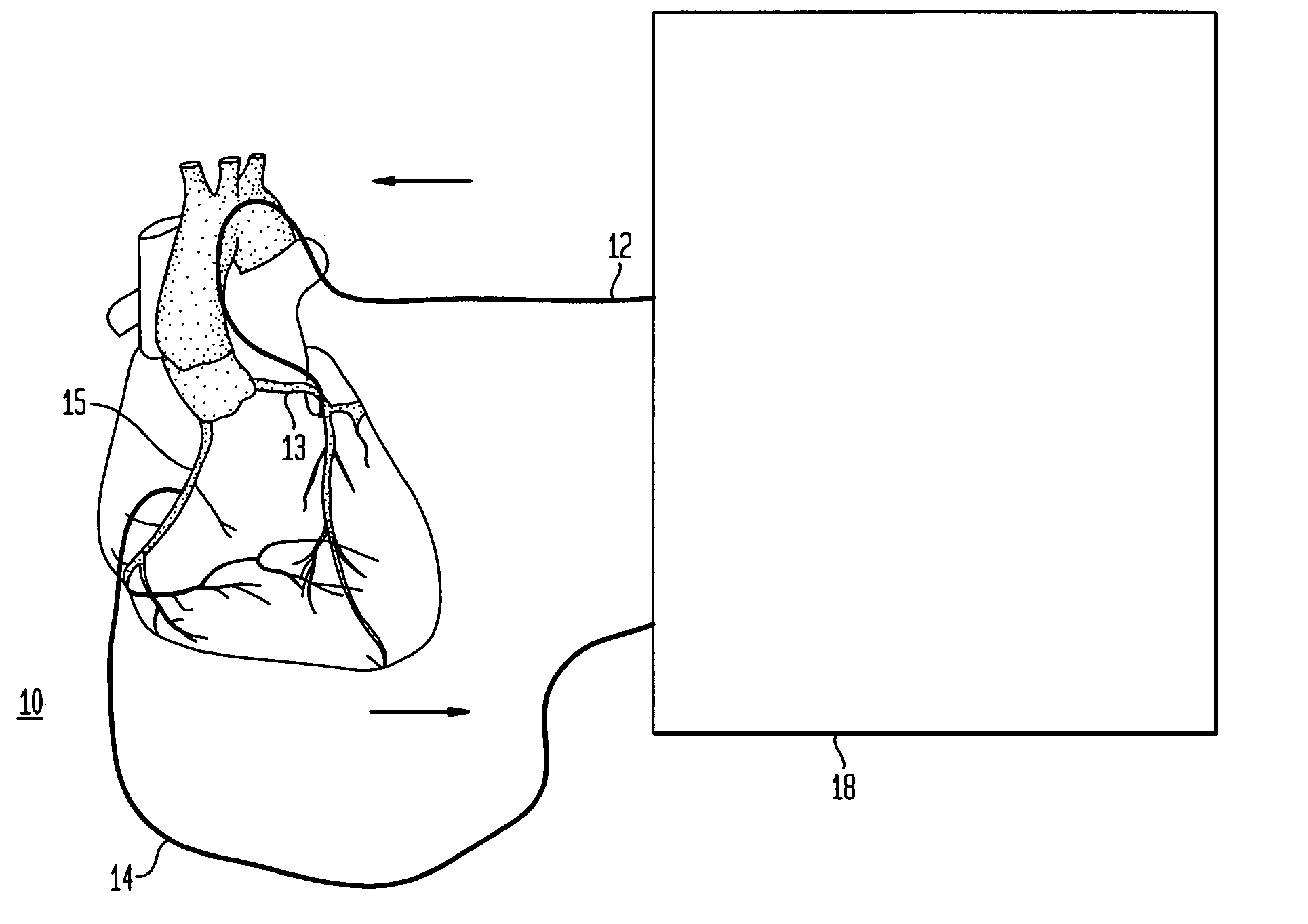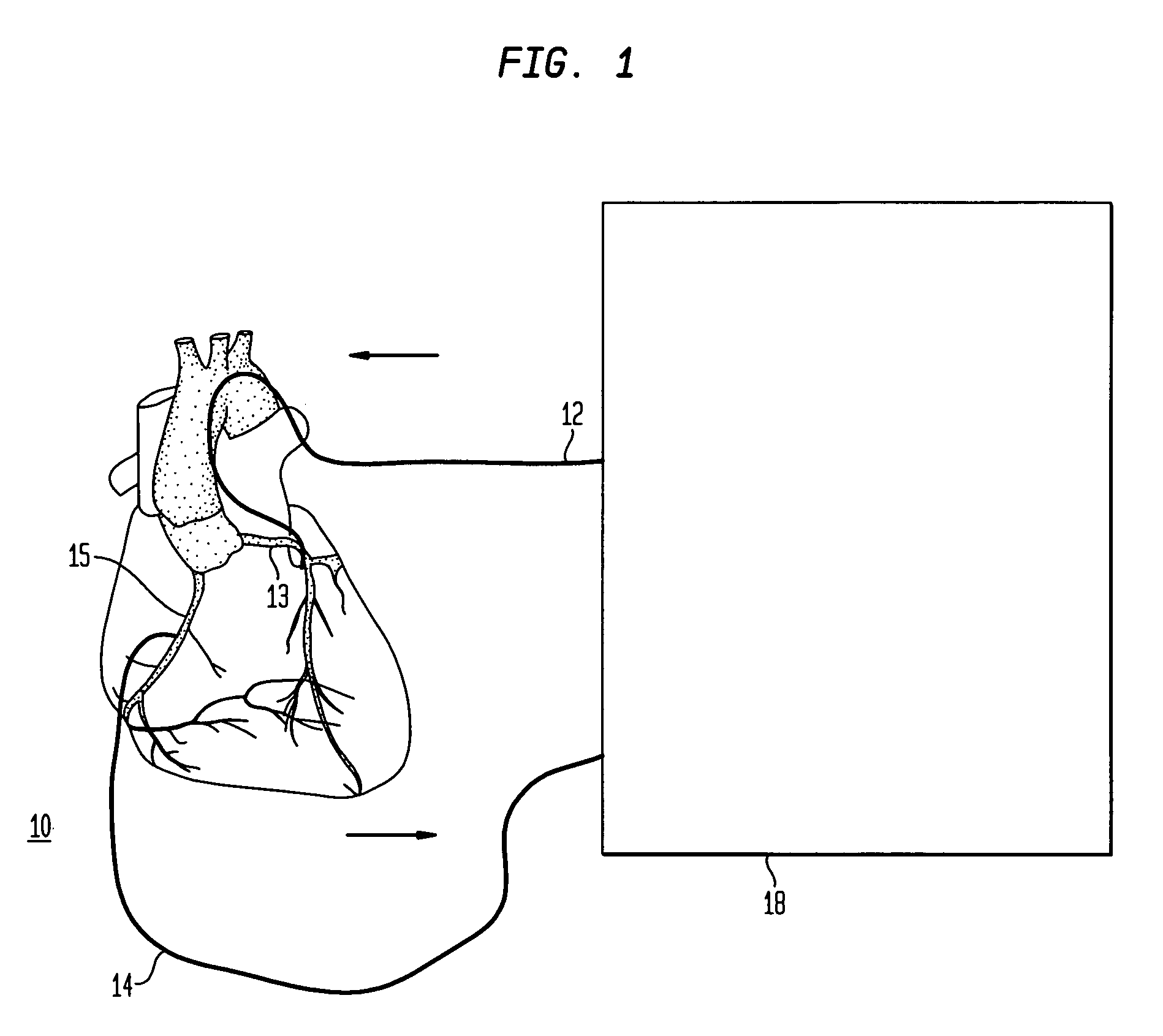Reagents, methods and systems to suppress phospholamban expression
- Summary
- Abstract
- Description
- Claims
- Application Information
AI Technical Summary
Benefits of technology
Problems solved by technology
Method used
Image
Examples
example 1
Target Sequences for Phospholamban siRNA
[0059] The following phospholamban siRNA target sequences were identified based on the open reading frames of human phospholamban mRNA (Genbank Acc. No. NM—002667), mouse phospholamban mRNA (Genbank Acc. No. NM—023129) and rat phospholamban mRNA (Genbank Acc. No. NM—022707). The target sequences were chosen following a BLAST search of sequences within a 40-55% GC range to ensure that only phospholamban mRNA would be targeted.
Human Phospholamban Target Sequence 1:5′-AAGTCCAATACCTCACTCGCT-3′(SEQ ID NO: 1)Human Phospholamban Target Sequence 2:5′-AAGCACGTCAAAAGCTACAGA-3′(SEQ ID NO: 2)Human Phospholamban Target Sequence 3:5′-AATTTCTGTCTCATCTTAA-3′(SEQ ID NO: 3)Human Phospholamban Target Sequence 4:5′-GGTCTTCACCAAGTATCAA-3′(SEQ ID NO: 4)Human Phospholamban Target Sequence 5:5′-GGCCATACTCTTACATAAT-3′(SEQ ID NO: 5)Human Phospholamban Target Sequence 6:5′-GGCAAGGAAAATAAAAGAT-3′(SEQ ID NO: 6)Human Phospholamban Target Sequence 7:5′-GCACGTCAAAAGCTACA...
example 2
Inhibition of Phospholamban Expression
[0060] An siRNA duplex (PB0188) targeting rat phospholamban target sequence 1 (SEQ ID NO: 12) was made by in vitro transcription using the Ambioni Silencer™ siRNA Construction Kit (Ambion, Austin, Tex.) following the manufacturer's instructions and quantified by spectrophotometry. The following oligonucleotides were used for generating the PB0188 siRNA duplex:
Oligo PB0188AS:5′-(SEQ ID NO: 14)AAAGTCCAATACCTTACTCGCCCTGTCTC-3′;andOligo PB0188SN:5′-(SEQ ID NO: 15)AAGCGAGTAAGGTATTGGACTCCTGTCTC-3′.
[0061] The last eight nucleotides at the 3′ end of each of oligonucleotides (CCTGTCTC; SEQ ID NO: 16) are not part of the siRNA sequence targeting rat phospholamban mRNA, but are required as part of the Ambion Silencer™ siRNA Construction Kit.
[0062] Cultured H9C2 rat cardiomyocyte cells were transfected with amounts of PB0188 siRNA equivalent to a final concentration of 9.375 nM, 18.75 nM, 37.5 nM, or 75 nM using the TransIT-TKO® transfection reagent (M...
PUM
| Property | Measurement | Unit |
|---|---|---|
| Pressure | aaaaa | aaaaa |
Abstract
Description
Claims
Application Information
 Login to view more
Login to view more - R&D Engineer
- R&D Manager
- IP Professional
- Industry Leading Data Capabilities
- Powerful AI technology
- Patent DNA Extraction
Browse by: Latest US Patents, China's latest patents, Technical Efficacy Thesaurus, Application Domain, Technology Topic.
© 2024 PatSnap. All rights reserved.Legal|Privacy policy|Modern Slavery Act Transparency Statement|Sitemap


